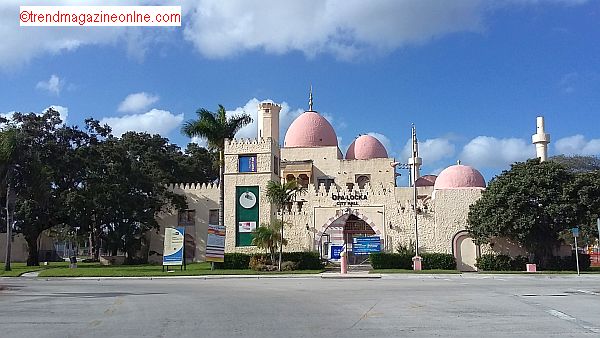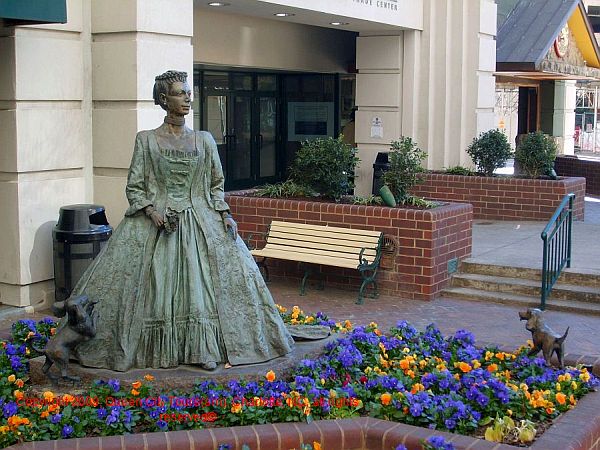 Although I was
born and raised in the City of Miami, you can count me in as one
of the many locals who have no earthly idea of the history of this fascinating
place and its neighboring municipalities. One such place is the small town to
the northwest known as Opa-Locka which encompasses a grand total of 4.2
miles which translates into approximately 176 square city blocks.
Although I was
born and raised in the City of Miami, you can count me in as one
of the many locals who have no earthly idea of the history of this fascinating
place and its neighboring municipalities. One such place is the small town to
the northwest known as Opa-Locka which encompasses a grand total of 4.2
miles which translates into approximately 176 square city blocks. My
little sister moved to this town over 20 years ago and never left; which
suggests that she loves this quaint little suburb of Miami. In fact, I
visited her home for the first time this past Thanksgiving (2015) which
also gave me a chance to look around town -- something that I have neglected
far too long.
My
little sister moved to this town over 20 years ago and never left; which
suggests that she loves this quaint little suburb of Miami. In fact, I
visited her home for the first time this past Thanksgiving (2015) which
also gave me a chance to look around town -- something that I have neglected
far too long. This small but
well-known town was founded on Friday May 14, 1926, by aviation
pioneer Mr. Glenn Hammond Curtiss. He was born on Tuesday May
21, 1878, in Hammondsport, NY, and was a leading American
manufacturer of aircraft by the time our country entered World War I (1914
- 1918). His history began in the bicycle business where Curtiss earned
fame as one of the leading racers in western New York State.
This small but
well-known town was founded on Friday May 14, 1926, by aviation
pioneer Mr. Glenn Hammond Curtiss. He was born on Tuesday May
21, 1878, in Hammondsport, NY, and was a leading American
manufacturer of aircraft by the time our country entered World War I (1914
- 1918). His history began in the bicycle business where Curtiss earned
fame as one of the leading racers in western New York State. His need
for speed inspired him to begin building lightweight internal-combustion
engines for motorcycles and on Wednesday January 23, 1907,
he became the fastest man on earth after reaching 136.3 miles (219.4 km)
per hour on one of his motorcycles at Ormond Beach, Florida. Mr.
Curtiss died on Wednesday July 23, 1930, in Buffalo,
NY.
His need
for speed inspired him to begin building lightweight internal-combustion
engines for motorcycles and on Wednesday January 23, 1907,
he became the fastest man on earth after reaching 136.3 miles (219.4 km)
per hour on one of his motorcycles at Ormond Beach, Florida. Mr.
Curtiss died on Wednesday July 23, 1930, in Buffalo,
NY. Opa-Locka
was built and developed around the Arabian Nights theme which explains
street names such as Ali Baba, Aladdin, and yes Sesame Street;
as well as the Moorish architecture around the city. It is one of the
few -- of 34 -- municipalities that make up Miami-Dade County that uses
street names solely as opposed to numbers. In 2009, Opa-Locka was
the first community in the U.S. to honor our first African-American
President by renaming a mile-long stretch of Perviz Avenue -- from
Oriental Boulevard to Ali-Baba Avenue -- Barack Obama Avenue.
Opa-Locka
was built and developed around the Arabian Nights theme which explains
street names such as Ali Baba, Aladdin, and yes Sesame Street;
as well as the Moorish architecture around the city. It is one of the
few -- of 34 -- municipalities that make up Miami-Dade County that uses
street names solely as opposed to numbers. In 2009, Opa-Locka was
the first community in the U.S. to honor our first African-American
President by renaming a mile-long stretch of Perviz Avenue -- from
Oriental Boulevard to Ali-Baba Avenue -- Barack Obama Avenue. The city
originally included 105 buildings that display a variety of domes,
minarets, and outdoor staircases, to include an airport, train station,
swimming pool, archery club, golf course, zoo park, and hotel. The Native
Americans called it "Opa-tisha-wocka-locka" meaning a "big island
covered with many trees and swamp;" however, the name was shortened when Mr.
Curtiss and architect Bernhardt Muller got involved. Opa-Locka
has an executive airport, three parks, two lakes, and a railroad/tri-rail
station, to serve its estimated 16,565 residents (source: Census Bureau, 2015).
The city
originally included 105 buildings that display a variety of domes,
minarets, and outdoor staircases, to include an airport, train station,
swimming pool, archery club, golf course, zoo park, and hotel. The Native
Americans called it "Opa-tisha-wocka-locka" meaning a "big island
covered with many trees and swamp;" however, the name was shortened when Mr.
Curtiss and architect Bernhardt Muller got involved. Opa-Locka
has an executive airport, three parks, two lakes, and a railroad/tri-rail
station, to serve its estimated 16,565 residents (source: Census Bureau, 2015).













